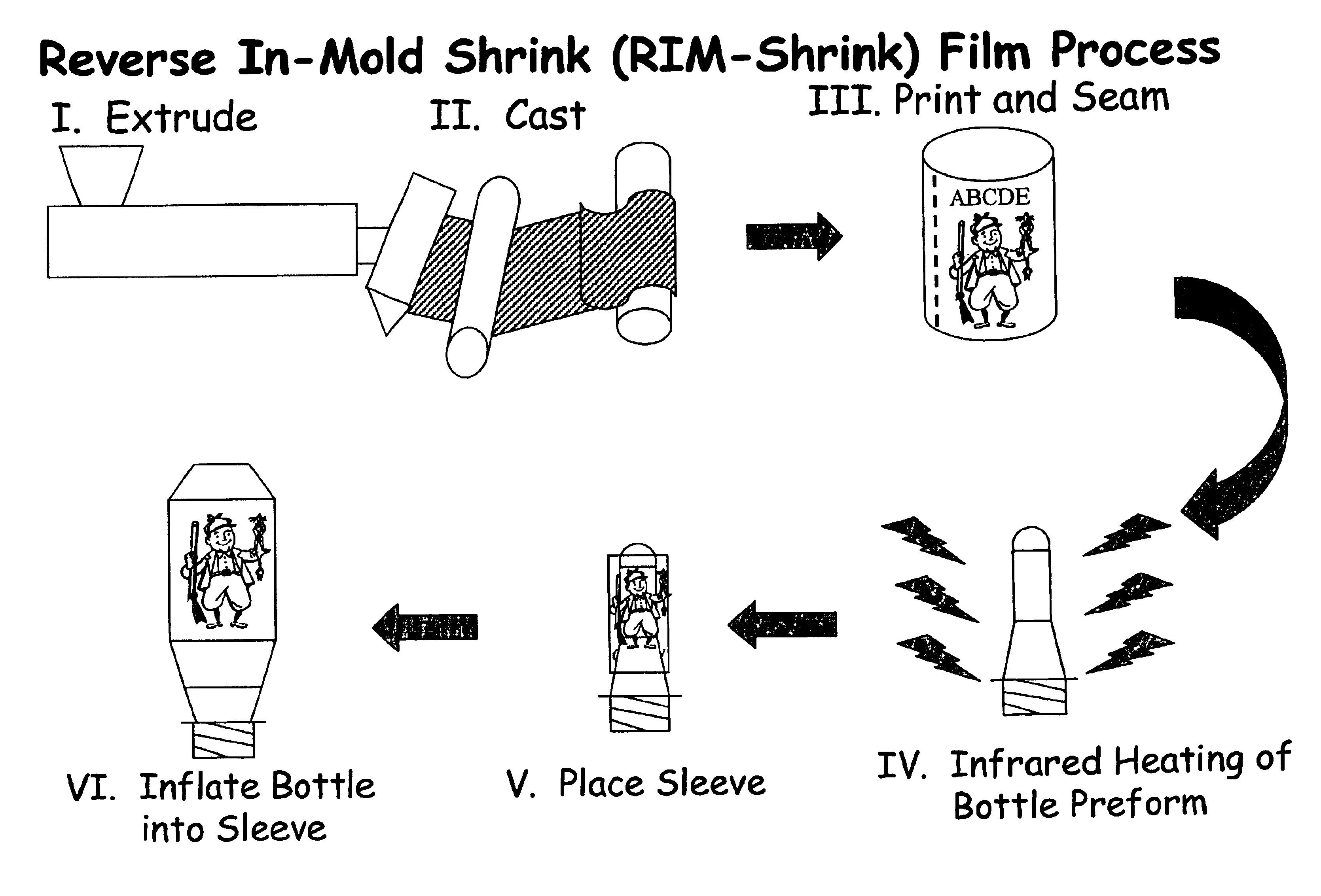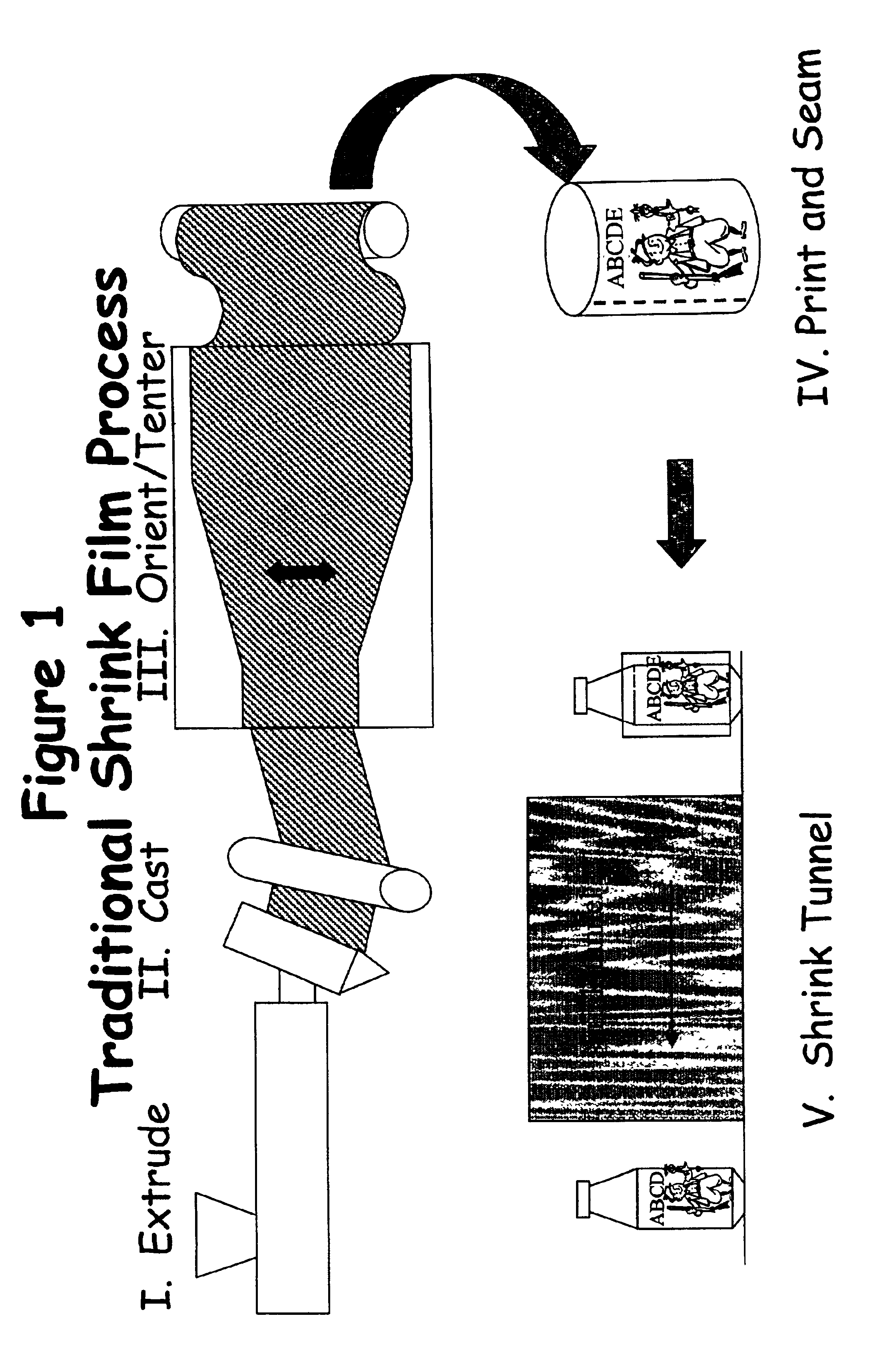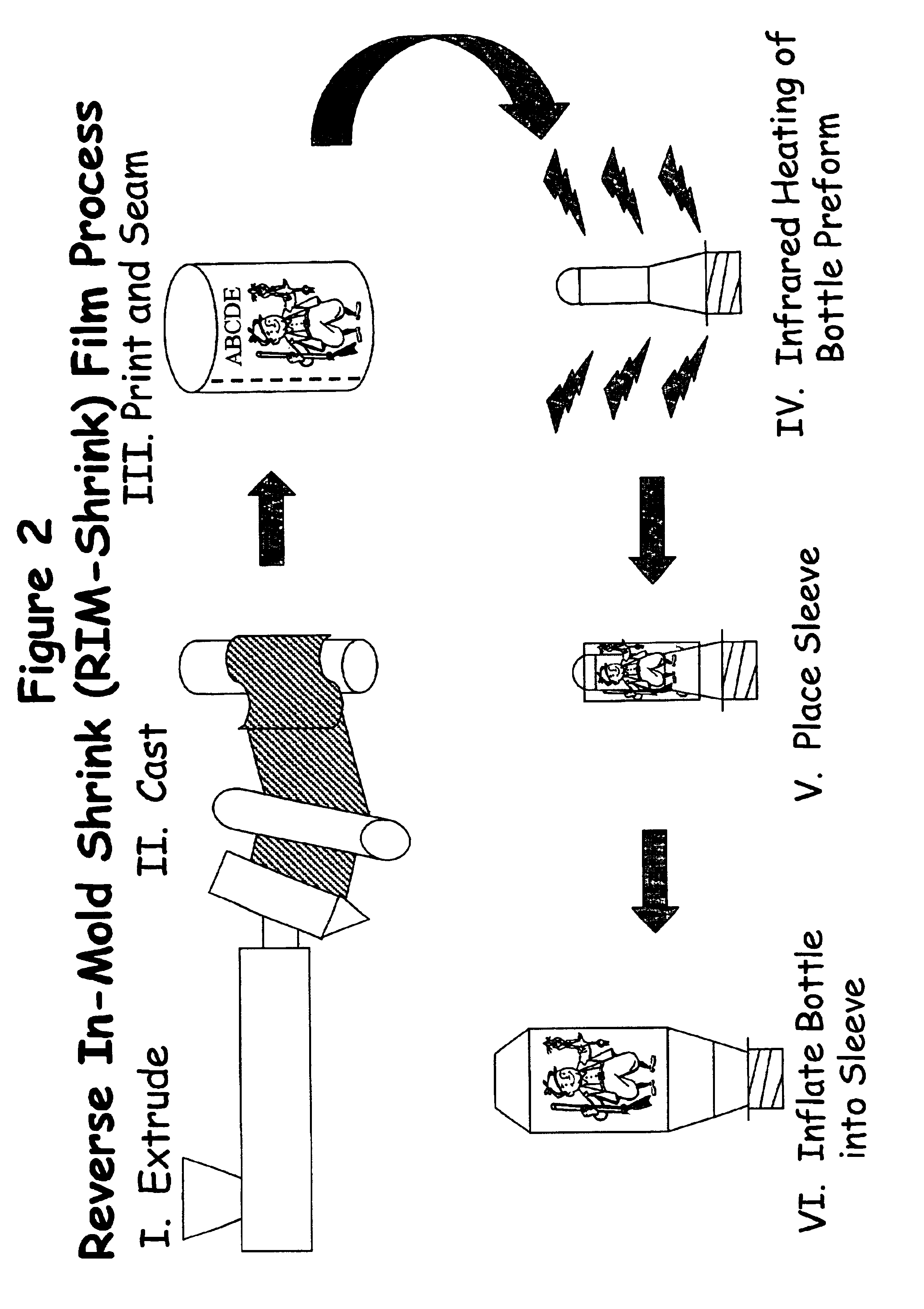Process for making labeled containers using a stretch blow molding process
a technology of labeling and blow molding, which is applied in the field of labeling container processes, can solve the problems of increasing the cost of shrinking tunnel, requiring additional cost, and expensive processes, and achieves the effects of reducing costs, increasing process convenience, and reducing costs
- Summary
- Abstract
- Description
- Claims
- Application Information
AI Technical Summary
Benefits of technology
Problems solved by technology
Method used
Image
Examples
example 1
Two-Liter Contour Labeling Using PET Sleeves
[0044]Sleeves of slightly oriented PET 12822 film were made using a blown film process. These sleeves had a diameter of 1.44 inches and were nominally 4 mils thick. To simulate labeling, a grid pattern was drawn on the sleeve prior to testing using a permanent marker. The preforms used were two-liter bottle preforms having an outer diameter of 1.15 inches. The sleeve was a lot larger than the preform but this was the only sleeve diameter available at the time of testing.
[0045]Reheat blow molding was performed using a lab-scale RHB unit. The preform was first heated using a bank of infrared quartz type heaters to a temperature of approximately 100° C. Next the preform was rapidly transferred to the blow molding station. Prior to closing the mold, however, a sleeve was placed over the preform. The sleeve was nominally cut the length of the preform such that one end contacted the neck ring and the other just barely extended past the base end ...
example 2
Two-Liter Contour Labeling Using Polypropylene Sleeves
[0047]Following a procedure similar to that in Example 1 above, sleeves were made via the blown film process using polypropylene instead of PET. Polypropylene is desirable because it is already the material of choice for labels because of its low cost and low density. The polypropylene was nominally 3 mils thick and 1.6 inches wide. After blowing the bottles as with Example 1, the film was found to fit snuggly to the contour of the bottle. However, in contrast to the PET label film, it did not adhere to the base bottle so it can be easily separated during recycle.
example 3
1.5 Liter Refillable Contour Labeling with PET Adding the Sleeve Prior to IR Heating
[0048]The PET sleeve used in Example 1 was applied to a 1.5 liter preform having a 1.25 inch nominal outer diameter. However, since this particular preform and mold combination was attached to a different reheat blow molding machine, the process had to be modified slightly. At the time of the experiment, there was no way to stop the machine long enough between heating and blowing to attach the preform sleeve. Therefore, the preform sleeve was placed on the preform before the infrared heating step began and the sleeve went through the full heating and blowing process. The sleeves were also labeled with a grid via a black permanent marker. During the heating step, the sleeves were observed to shrink down slightly around the preforms thus enhancing their adhesion. During the blow step, the sleeve stretched nicely and the grid was uniformly distorted creating an attractive form fitting label. Adhesion to...
PUM
| Property | Measurement | Unit |
|---|---|---|
| temperatures | aaaaa | aaaaa |
| thickness | aaaaa | aaaaa |
| thickness | aaaaa | aaaaa |
Abstract
Description
Claims
Application Information
 Login to View More
Login to View More - R&D
- Intellectual Property
- Life Sciences
- Materials
- Tech Scout
- Unparalleled Data Quality
- Higher Quality Content
- 60% Fewer Hallucinations
Browse by: Latest US Patents, China's latest patents, Technical Efficacy Thesaurus, Application Domain, Technology Topic, Popular Technical Reports.
© 2025 PatSnap. All rights reserved.Legal|Privacy policy|Modern Slavery Act Transparency Statement|Sitemap|About US| Contact US: help@patsnap.com



